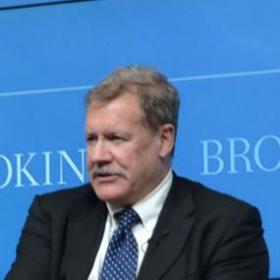
NATO’s de facto Members in Asia: South Korea Included
Greg Austin wrote this piece for New Europe
NATO has a special class of partners, informally called “contact countries” or NATO’s “other partners”, all in the Asia Pacific. They “share similar strategic concerns and key Alliance values”, according to NATO, and include “Australia, Japan, the Republic of Korea and New Zealand”.
In the 1980s, we often called Japan the 16th member of NATO. This de facto status hinged on the American commitment to defend Japan in the face of possible war with the Soviet Union, a circumstance that would have almost certainly involved NATO as a whole.
Fast forward to 2010, North Korea has just attacked South Korea for the second time in six months. The United States has a bilateral security treaty with South Korea. Does South Korea’s treaty relationship with the United States engage NATO on a de facto basis as committed to defend South Korea if there is an all-out war?
The UK, France, Belgium, the Netherlands, Greece and Turkey sent forces to the Korean War (1950-53) to fight alongside their United States allies. (So did Australia, New Zealand, South Africa and Ethiopia.) The operation was UN-sanctioned, because the Republic of China on Taiwan, and not the Peoples Republic of China, was sitting in the UN Security Council and the USSR, with veto power, had been boycotting the Security Council at the time the vote was taken. The allies (including Taiwan) went to the General Assembly in a Uniting for Peace Resolution to prevent any Soviet veto of the continuation of the UN mandate.
The world is a very different place now, more than half a century later. The UN Command in Korea may still exist formally, as South Africa was reinstated to membership of it in 2010, just last week, almost coincident with the latest North Korean attack. But the Republic of Korea continues to deepen its relations with NATO. The Foreign Minister addressed the North Atlantic Council in May 2010 after offering in April to send a Provincial Reconstruction Team to Afghanistan to join NATO-led forces there. South Korea participated in the NATO Summit in Lisbon in November 2010 along with some 19 other partner countries.
The latest North Korean attack coincided with the visit to the South by a NATO parliamentary delegation. NATO has expressed strong concern about the attack.
In the new NATO strategic concept approved at the Summit, Asia is not a subject that gets attention even though the “Gulf” (Persian Gulf?) is. Yet NATO appears to have made what, as a package, could be interpreted as a new formal, if fairly low-level and evolutionary commitment to Asia (and the world). “We will be open to consultation with any partner country on security issues of common concern. We will give our operational partners a structural role in shaping strategy and decisions on NATO-led missions to which they contribute.”
So what is the NATO role in Asia, and more specifically East Asia? It is hard to escape the conclusion that now, as in the 1980s, NATO remains a major determinant of the balance of military power in East Asia. This does not mean that all European members of NATO would become automatically engaged in fighting in Korea if it escalated to all war. The United States and South Korean forces would easily defeat North Korean conventional forces.
It does mean however, that leaders of NATO Europe with an interest in Korean security must now review where exactly they stand. NATO’s centrality to the latest Korean crisis as a continuing power balancer is mandated by the strong and perfectly legitimate interest of China in what may now unfold.

